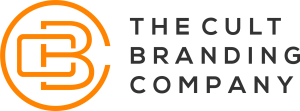LEGO, the beloved Danish toy company, wasn’t always the powerhouse it is today. By the early 2000s, the brand was in crisis. After years of rapid expansion into theme parks, video games, and an overwhelming number of new product lines, LEGO had lost sight of its core audience. Sales plummeted, and by 2003, the company was facing its worst financial crisis in history.
What went wrong? LEGO had strayed too far from what made it special—its passionate community of builders. Instead of nurturing its most loyal customers, LEGO was chasing trends, diluting its brand identity in the process.
The Cult Branding Approach: Community-Driven Innovation
LEGO’s revival came from an unexpected source: its most devoted fans. Instead of treating customers as just consumers, LEGO recognized them as co-creators, giving them a role in shaping the brand’s future.
- Engaging the Superfans with LEGO Ideas
- The company launched LEGO Ideas, an open platform where fans could submit their set designs. If a submission gained enough votes, LEGO would consider producing it. This strategy turned customers into brand collaborators, deepening their emotional connection.
- Some of the best-selling LEGO sets, including the NASA Apollo Saturn V and Ghostbusters Ecto-1, originated from this community-driven initiative.
- Strengthening Rituals Through Events and Competitions
- LEGO expanded its BrickCon and BrickFair events, bringing together thousands of fans to celebrate creativity and innovation. These gatherings solidified LEGO as more than just a product—it became a lifestyle and a passion shared by a global community.
- Annual LEGO building challenges and collaborations with influencers further fueled engagement and a sense of exclusivity.
- Leveraging Nostalgia While Innovating
- Rather than only pushing new sets, LEGO leaned into its deep heritage by re-releasing classic sets, like the LEGO Castle and Pirates series, tapping into the emotional bonds that adults had formed with the brand as children.
- At the same time, LEGO embraced digital transformation, creating an immersive app experience and partnering with franchises like Star Wars, Harry Potter, and Marvel, ensuring its relevance with new generations.
The Results: A Thriving Brand with a Passionate Community
By refocusing on its core audience and fostering a sense of community, LEGO not only recovered but became the world’s most powerful brand (Brand Finance, 2015). The company’s revenue skyrocketed, reaching $9.6 billion in 2023.
More importantly, LEGO’s customers no longer just buy toys; they see themselves as part of the LEGO movement—a group of creative minds shaping the future of play.
Key Takeaway: The Power of Co-Creation
LEGO’s resurgence teaches an important lesson in Cult Branding: a brand is strongest when it gives its customers a role in its story. By embracing co-creation, fostering rituals, and staying true to its identity, LEGO transformed from a struggling toy company into an enduring icon.
For CEOs looking to build an unbreakable bond with their customers, the LEGO model is clear—make them part of your journey, and they’ll never leave your side.
What About Your Brand?
LEGO’s revival wasn’t just about making better products—it was about giving its customers a meaningful role in shaping the brand’s future.
As a leader, are you inviting your most passionate customers to be part of your brand’s story? What opportunities do you see to turn your customers into co-creators, advocates, or even collaborators?
Share your thoughts—we’d love to hear how you’re cultivating brand loyalty at the highest level.
